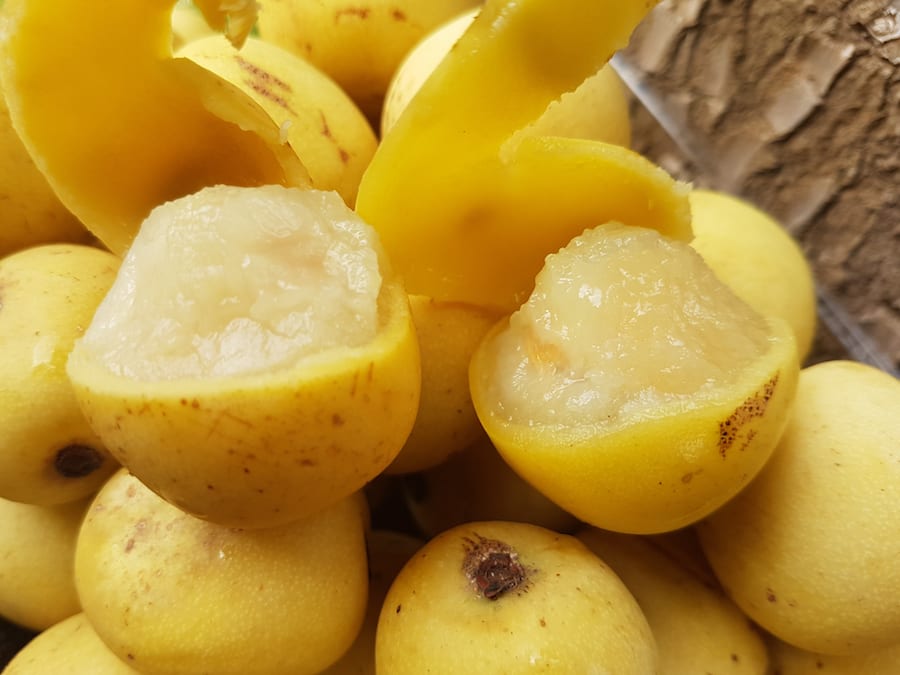Share this!
From Marula to Amarula

Have you ever heard of the Marula fruit? Unlike it’s celebrity cousins, Mango, Cashew, and Pistachio, the Marula fruit plays an understated role in an agricultural economy that provides the world with some very special products of which many people have never heard. Sclerocarya birrea, commonly known as the Marula tree, is about as African as African trees get; that is, they’re indigenous to West Africa, South Africa, and Madagascar. This is where they grow and live harmoniously within their geographic biome, and become an invasive species when humans take them to other parts of the world. The migration of the tree has historically followed the routes taken by the Bantu people, comprising several hundred ethnic groups in Sub-Saharan Africa.
The tree closely resembles the “tree of life,” made popular by the movie The Lion King. With its single-stem trunk and wide-spreading crown, the tree grows between 9 and 18 meters tall and bears the coveted Marula fruit that only grows for a short window in the year. Between December and March, a single tree will typically bear about 500 kg of fruit per year. The fruit will fall from the tree before it’s completely ripe and allow the sun and soil to mature it for five days before it’s ready for consumption. The fruit is so popular between the animals on the plain, that there is a literal race to get to the fruit. Kudus, baboons, rhinos, giraffes, and elephants, in particular, LOVE the Marula fruit and get very territorial of this special seasonal fruit. Elephants are perhaps the fruit’s second-largest consumer (after humans), but they’re also the tree’s worst enemy. Not only do Elephants consume the tree’s fruit, but they also consume the branches, fruit, and bark, in most cases completely decimating the trees and greatly reducing the window of opportunity for repopulation and pollination. In fact, the only way the tree’s seed is typically spread about is through human cultivation and wherever it may be present in elephant dung.
The Marula tree may be one key to economic success for impoverished rural agriculturally-inclined communities in Africa. The tree and her fruit provides so many products, that it has actually lifted entire populations out of poverty. When the tree begins to bear fruit, people build fences around some of the trees to protect the fruit that falls from various animals vying for it, so the fruit can ripen on the ground. It is then harvested and processed to create Marula juice, cream, oil and jellies. The tree’s leaves are also harvested to be fodder for livestock. The wood of the Marula tree is very hard can be used to make stools, beehives, bowls, and drums. Many people make root tonics and medicines to treat dysentery, diarrhea, rheumatism, insect bites, and malaria. The oil from the fruit’s nut is a very unique and highly coveted oil with a high burning point that makes the oil resistant to oxidation or rancidity. Said oil is also used in many cosmetics. Perhaps the most famous product for which the fruit is known is the Marula cream-based liqueur, Amarula. If you go to South Africa, you will be hard-pressed to find someone who hasn’t heard of nor tasted such a fine pleasure. The Amarula liqueur is indeed a delicate sweet treat that has been likened to Irish cream. For the record, Bailey’s could never even come close to the decadence and sophistication of such a special drink.
Fun fact: The Marula tree and its fruit has over 50 names across various languages!
P.S. There exists a myth that the Marula fruit can make animals drunk if they consume too much of the hearty fruit. Let us lay that to rest. Animals do not get drunk from eating this fruit, but drinking fermented Amarula liquer may certainly have you tipsy on the safari, so drink responsibly!






